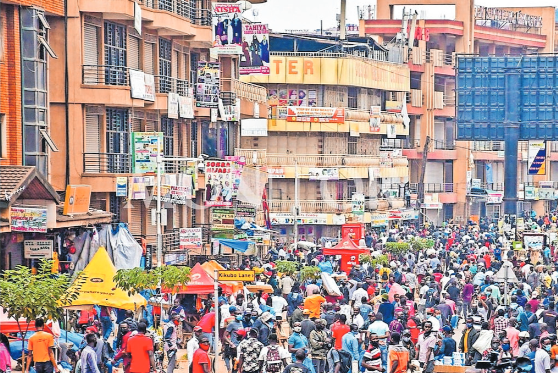Ghosts of apartheid return to haunt S.A

Author, Nicholas Sengoba. PHOTO/FILE
What you need to know:
What transpired in the last weeks was only a curtain raiser.
What started off with lofty promise as the ‘Rainbow Nation’ as envisaged by Archbishop Desmond Tutu following the first fully democratic elections in South Africa in 1994, is returning a negative dividend.
Looting, arson and many other forms of violence broke out in KwaZulu Natal following incarceration of former President Jacob Gedleyihlekisa Zuma (79) for contempt of court.
The world is acting like it is in shock. At the risk of being accused of being wise after the event, it is safe to say that South Africa was an accident waiting to happen. In fact what transpired in the last weeks was only a curtain raiser.
In 1948 when the National Party introduced the Apartheid ideology that called for separate development of all the races, the majority (indigenous) blacks came off much worse than the minority predominantly white Afrikaners. There was legislation upon legislation to legalise this system according to sahistory.org.za (Race and ethnicity in South Africa.) The legislative basis for racial classification during apartheid was the Population Registration Act No. 30 of 1950. This Act divided the South African population into three main racial groups: Whites, Natives (Blacks), Indians and coloured people (people of mixed race). Race was used for political, social and economic purposes. Politically, White people had the rights to vote, access to state security and protection as well as representation in the National Assembly as compared to other people. Economically, Whites had the privilege of having access to much more skilled and office jobs, and they had access to own the productive land and other means of production.
Similarly, the Reservation of Separate Amenities Act of 1953 legalised the racial segregation of public services, premises and other amenities. What followed was incessant war, violence by mainly the blacks who numbered about 55 million against the minority six million Whites who lorded it over them. It was this history that gave rise to the heroes like Nelson Mandela, Walter Sisulu, Ahmed Katharda, and Jacob Zuma to mention but a few. By the time South Africa tore down the legislative barriers of apartheid leading to the election of 1994, the system had created a huge gap between the races that was almost useless to talk about equality.
Apartheid intended to make the blacks third class citizens whose destiny would be determined by the minority white Afrikaners whose intentions were not to promote the interests of the blacks. Now you have a situation where blacks are free but like in the past cannot go to restaurants, residential areas, schools, hospitals, and enjoy the same employment opportunities like their White counterparts. Apartheid left them poor, without education, with low wages, no land to farm or economic opportunities like the Whites. So like the liberated slave in America stayed on the plantation to serve the same master who bought him, the majority of the Blacks in South Africa are stranded and facing the same conditions their forefathers faced between 1948 and 1994.
The situation has been exacerbated by the economic downturn brought by the Covid-19 pandemic. It is not just testing the immune system of mankind but also the resilience of societies. What you have in South Africa is not just young people who are hungry but also who are angry. That is why they are not just looting but destroying the property of the rich like the brand new trucks and car stores that they cannot loot. South Africa (and the rest of Africa) must be worried. When people are impoverished deliberately in order to create a cynical power relation that makes it easy for a small group to control and manipulate them, a time comes when the numbers grow too big and unruly. South Africa has a huge land problem where the minority own most of the productive land. The majority of the energetic young people’s only hope is to find work in the urban areas. This is tricky because the work is not readily available. Where it is available it is not well paying. Where it is well paying most of the Black people who come from impoverished backgrounds cannot access it because they lack the skills.
The shanty town is now the hub of the frustrated and a keg that is only waiting to explode. It is no wonder that South Africa has one of the highest crime rates in world. The message for African countries like Uganda is that the urban poor who have no land to go back to because corruption money is buying them out of the provinces, will look at the rich in the cities as the source of their survival. Apartheid intended to keep the black people way behind and achieved that. People who have been subjected to 18th Century conditions by deprivation will negotiate in the ways man did back then. They will forcefully fight and grab whatever they can lay their hands on. The ghosts of apartheid are coming back to haunt them. These ghost can only be appeased by levelling the playing field and granting the majority Blacks a fair share in the land and economic opportunities that South Africa has to offer in abundance. This should happen even if it requires insane affirmative action.
Anything short of this is a recipe for disaster, a taste of which we have just witnessed because to overcome the legal system of apartheid violence was the resort. It will be the same when it comes to economic and social deprivation.
Mr Sengoba is a commentator on political and social issues
Twitter: @nsengoba




